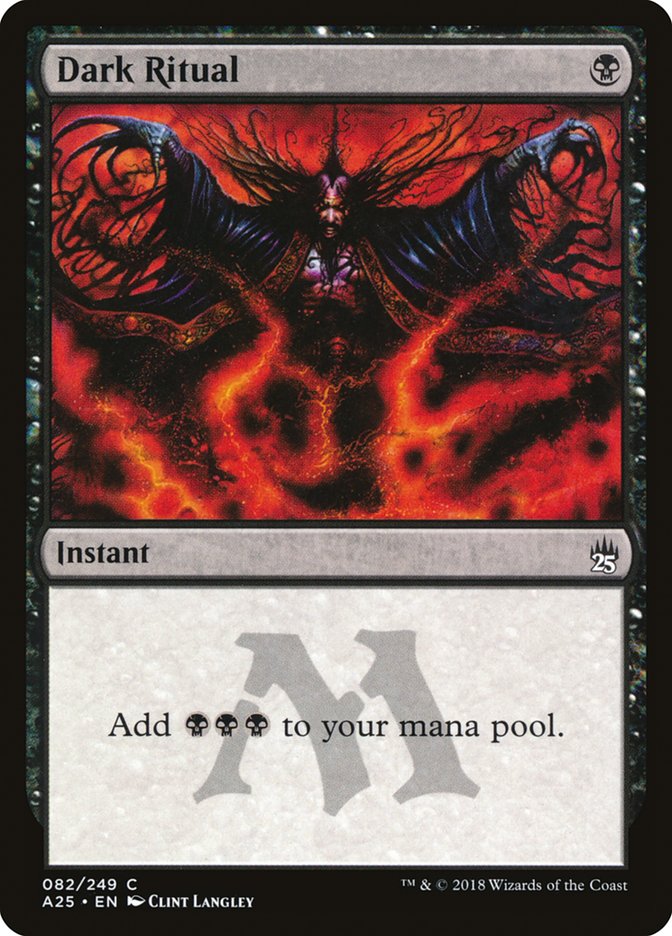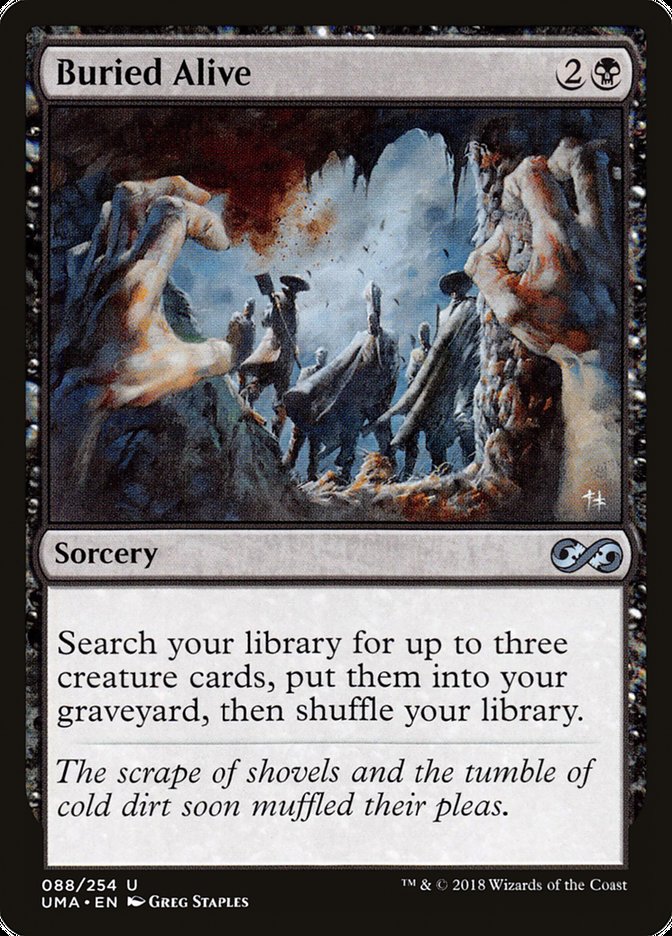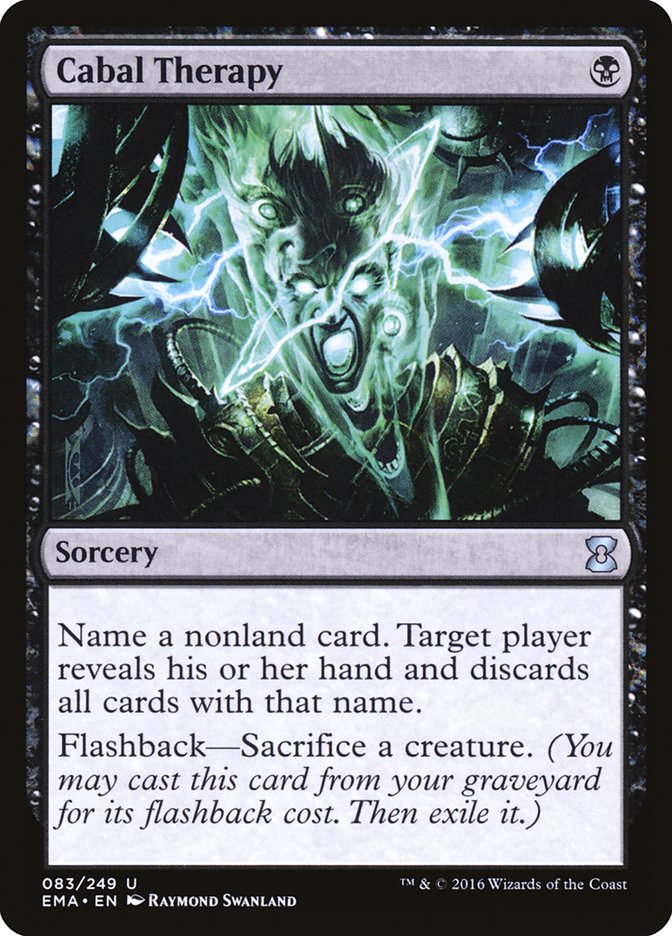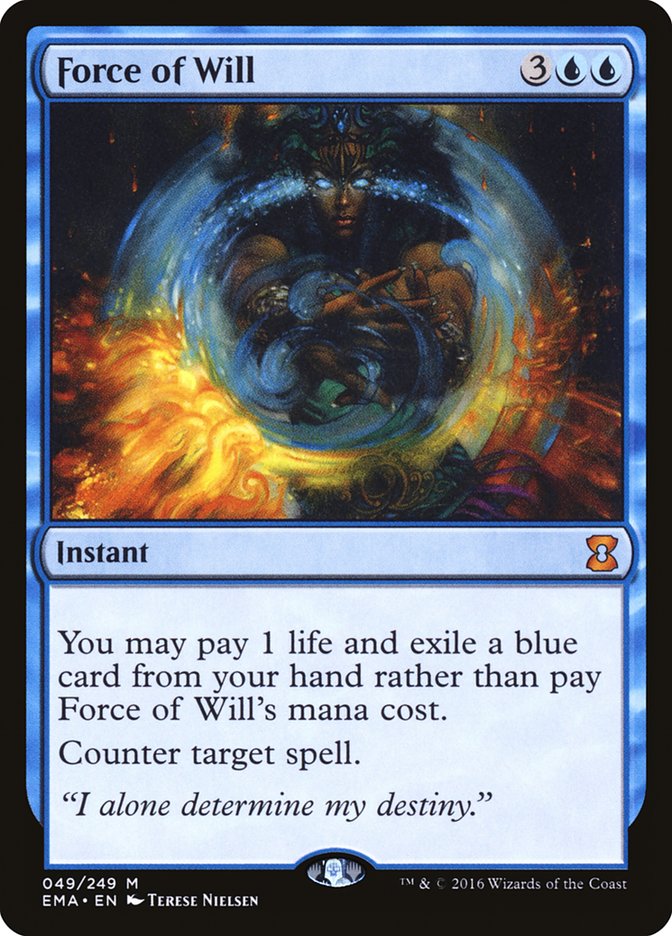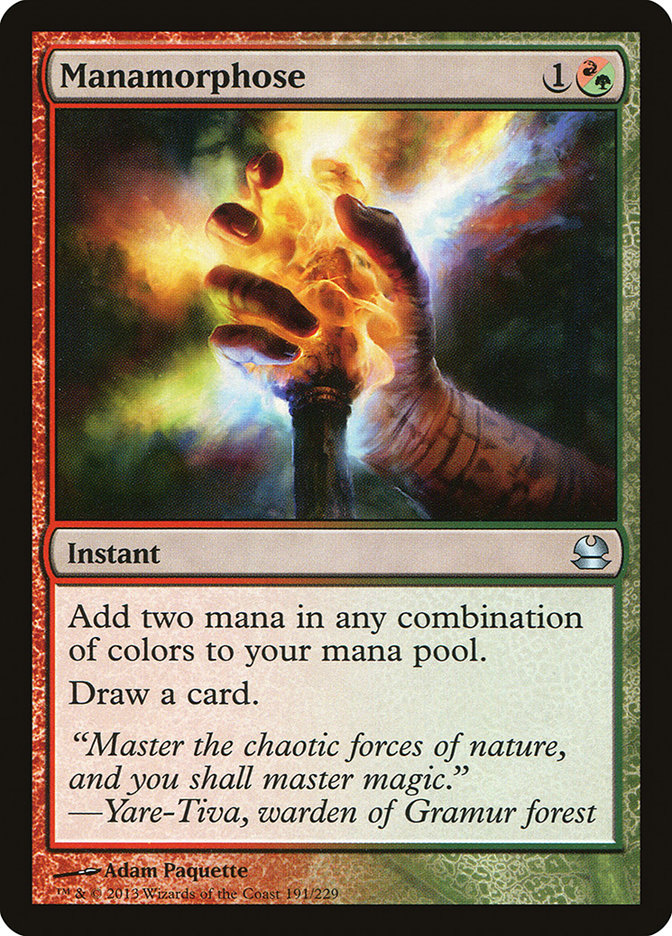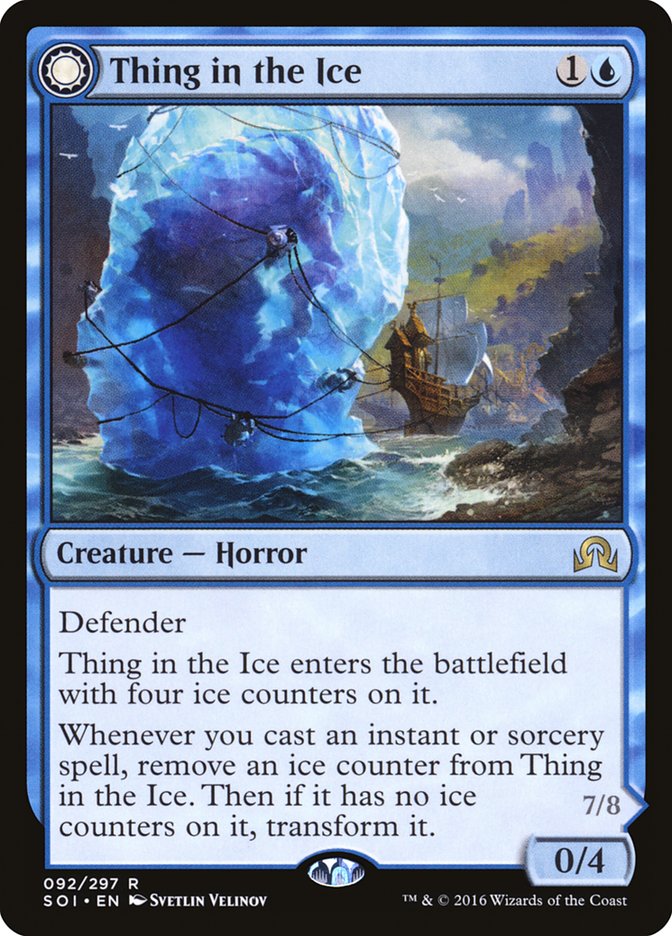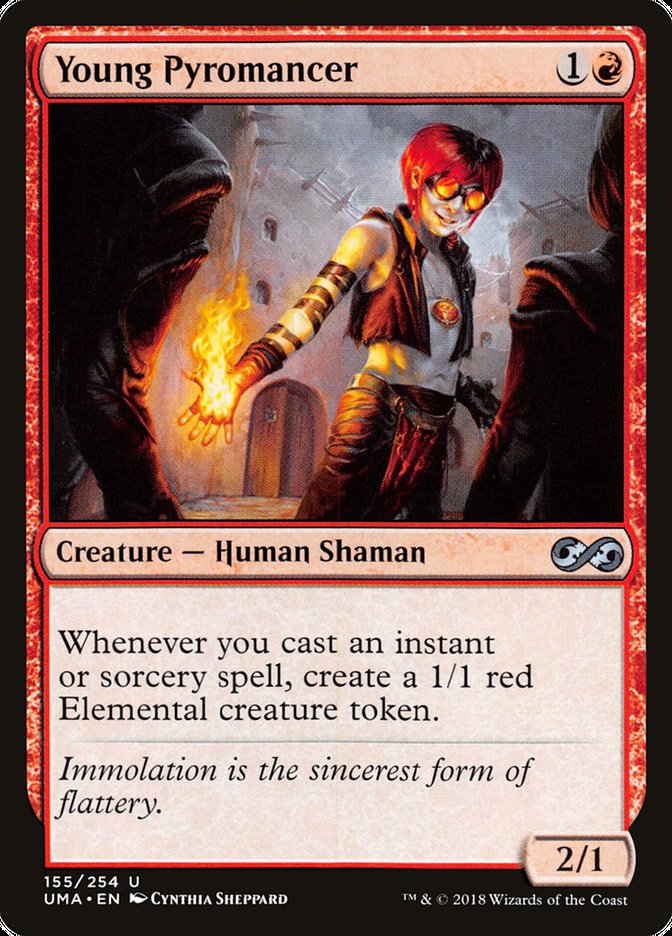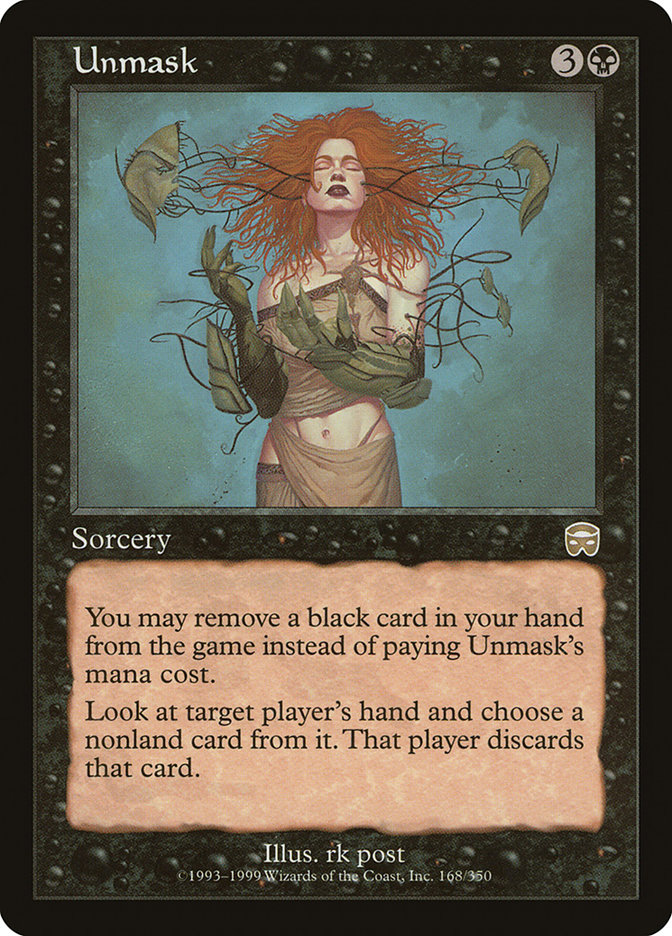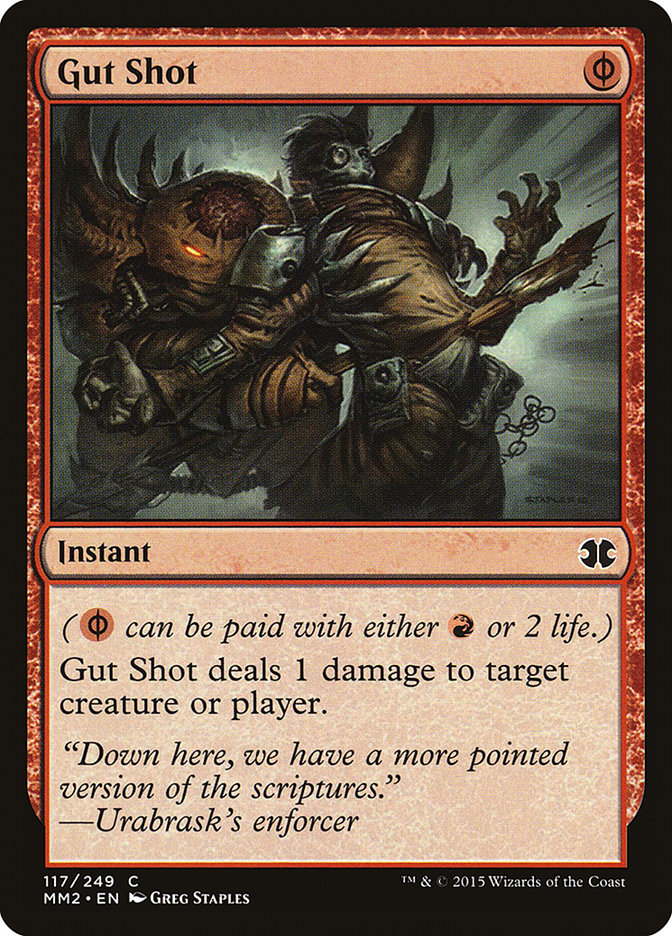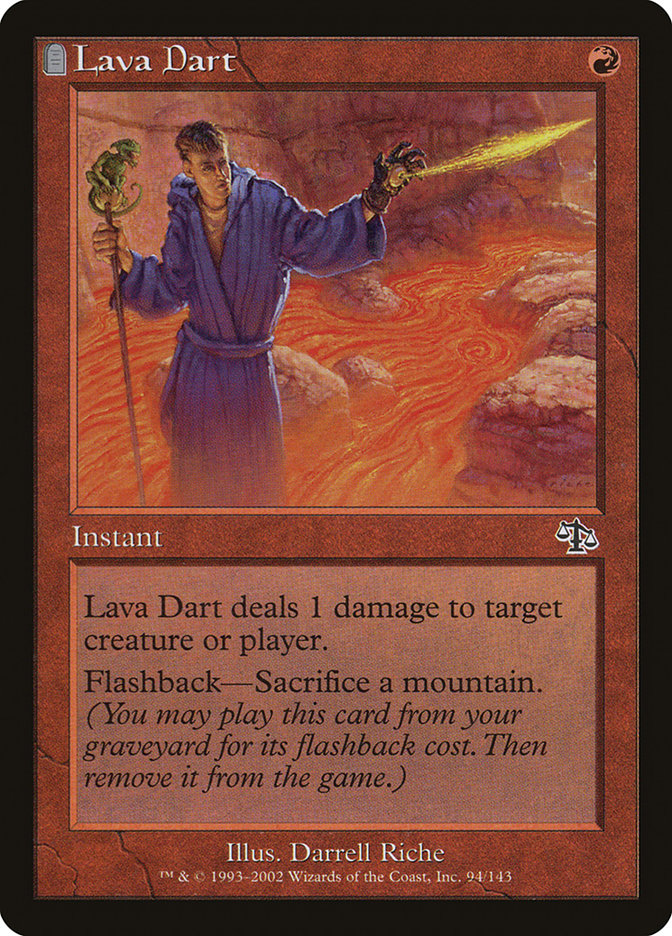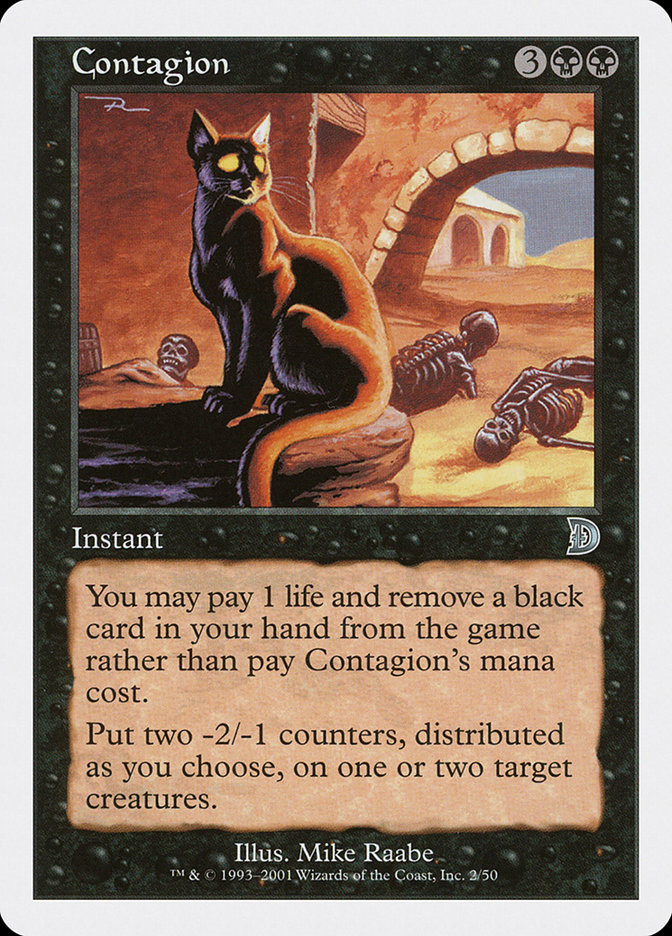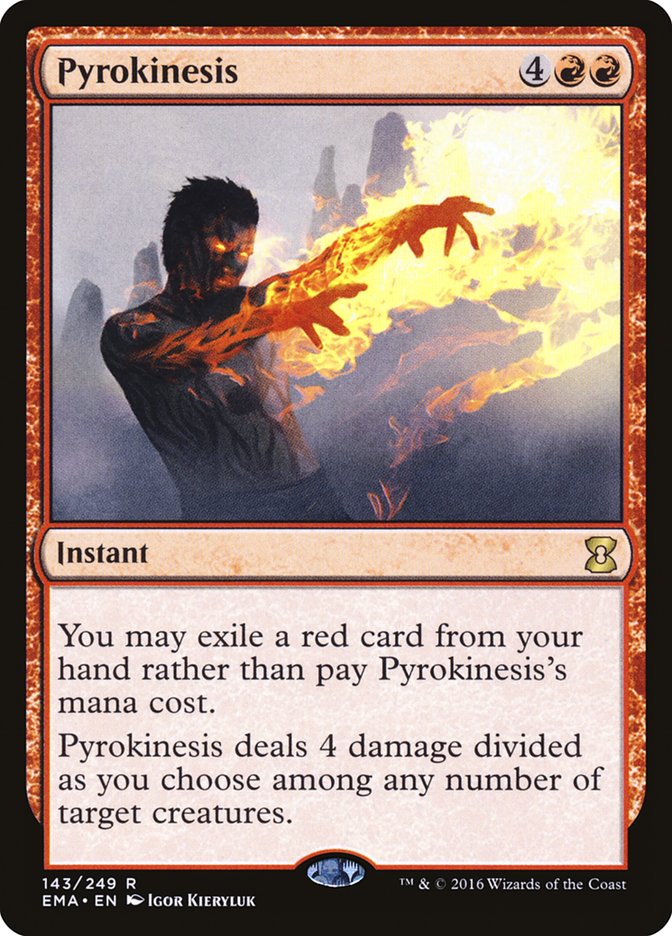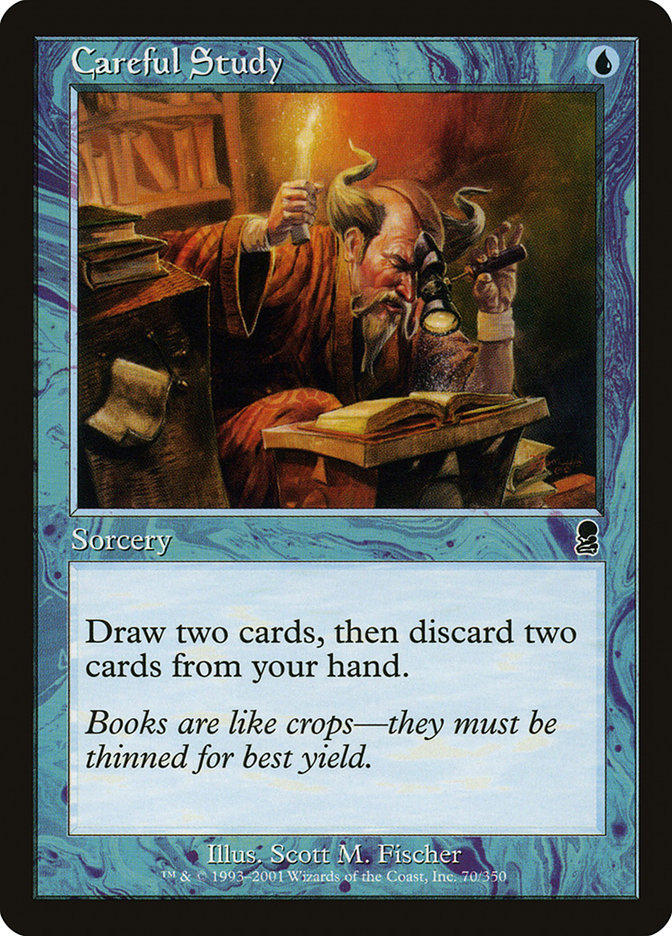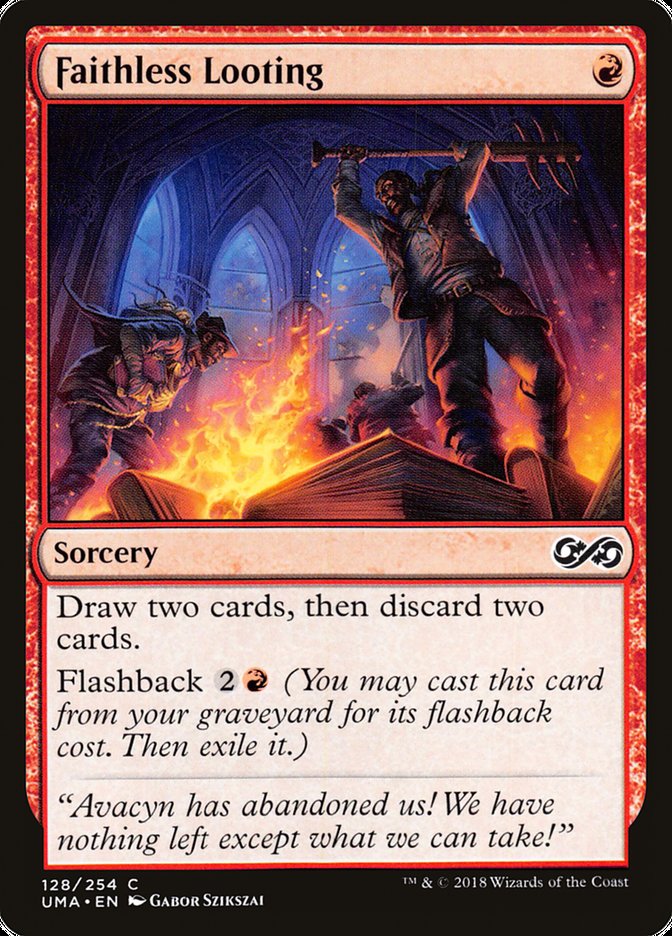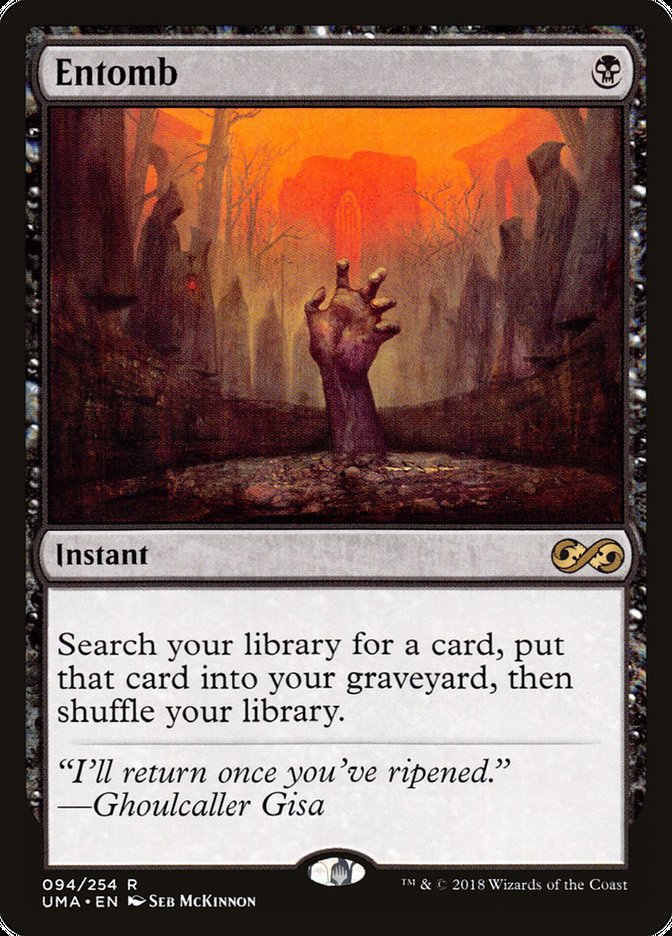With Arclight Phoenix getting a ton of hype in Modern for being the best deck, I only thought it fitting to see just how good it could be in Legacy too. The formats feature obvious similarities, and the power level is clearly there. You just have to figure out the right surrounding cast. But you also have to ask yourself whether or not the investment is worth it.
When you expose yourself to anti-graveyard cards, there is some amount of risk in that you no longer have the ability to control the outcome of the game. The onus of interaction is on the opponent, and if they’re able to pass the test, then you’re out of luck. With that said, there are plenty of ways to build Arclight Phoenix strategies that seem viable, even if they aren’t exactly battle tested. If you want a look at some builds I was working on a while back, you can find them here.
Small-Ball
Since writing that article, a new version sprang to life that caught my attention.
Creatures (9)
Lands (13)
Spells (38)

As I watched the deck in action for the first time, something started to churn inside me. Something ancient. Something deep and wonderful and terrifying. This build was utter genius. I was watching a masterpiece come to life. Everything about the deck, from the construction to sideboard plans to alternate win conditions, looked perfect. When I first encounter a new deck, I try to poke holes to see what’s missing or what can be improved. And at every point I found myself understanding a different reason why the deck was built the way it was.
So let’s break it down and start at the beginning.
I’ve gotten a lot of questions about this deck over the last few weeks as I’ve tried variations on stream. And each time, I find myself wishing I hadn’t made the changes I made. And while my record with the archetype isn’t stellar, I can almost always point to a spot where I messed up, sideboarded poorly, or just didn’t understand one of the interactions. This is one of the most complex decks I’ve ever played, but it’s also one of the hardest to disrupt because it doesn’t put all its eggs in one basket. But perhaps I’m getting ahead of myself.
Small-ball play with Arclight Phoenix has been mostly overshadowed in Legacy thanks to the hype around Dark Ritual plus Buried Alive, and even the less-often-used Intuition. I just thought it was important to note that you don’t have to shove all-in with Arclight Phoenix. The Modern Izzet Phoenix decks are doing just fine. They just happen to have the right colors for disruption in Modern, whereas the Legacy versions likely need to play black for Cabal Therapy and the like.
Playing a slower Arclight Phoenix deck is certainly less flashy than the Buried Alive versions, but you also stop opening yourself up to opposing disruption. Figuring out the best ways to win games by getting back one or two copies of Arclight Phoenix at a time is challenging, but it’s also pretty easy once you figure it all out. But how did we get here in the first place? What are the strengths and weaknesses of each of these iterations? And is there something we could potentially be missing?
Let’s go back over Arclight Phoenix before SCG Cincinnati and figure out if we can find the best possible version for the current metagame.
Proactive and Reactive Disruption
Cabal Therapy is one of the most potent weapons of attack against combo in Legacy. It helps strip the opponent of important tools while also giving yourself some amount of protection for your Arclight Phoenix. This is especially true after sideboard when the most common form of graveyard hate is Surgical Extraction. All you have to do is make sure you don’t put an Arclight Phoenix into the graveyard before making sure the coast is clear.
But Cabal Therapy doesn’t stop there. When you combine Cabal Therapy with Bloodghast or an already active Arclight Phoenix, you start to see just how insane it can be. Acting as an additional spell for Arclight Phoenix is nice, but have you ever used Cabal Therapy to get an Arclight Phoenix or two out of your own hand? I have, and I have to say: it’s quite nice.
Many of the successful versions of Arclight Phoenix in Legacy thus far have paired this discard suite with some amount of reactive disruption. In his initial build, Tommy Ashton went with a few copies of Daze. On the surface, Daze doesn’t seem to do a ton, but it sure helps when you’re going for the Dark Ritual into Buried Alive play on the first turn. But what if you’re not shoving all-in?
If you’re going to have your alternate threat be Thing in the Ice, you need to protect it. Force of Will does exactly that, while also giving you an alternate way to interact with various combo strategies in a way that doesn’t allow them to beat you with a timely topdeck.
As someone who’s no stranger to combo in Legacy, I can tell you that things become significantly more difficult as your opponent hits you with different types of disruption. Delver strategies that play some amount of discard are notoriously heinous matchups because they hit you with Wasteland, discard, and counterspells, effectively strangling you on all fronts while attacking you with the cheapest threats Legacy has to offer. Pairing Force of Will with Cabal Therapy in a deck that features a decently fast clock is really smart.
Threat Diversity
Diversifying your threats in Legacy is also important, because it keeps your opponent on their toes and can also invalidate certain removal spells. Thing in the Ice is certainly weak to Fatal Push, yet shines against a number of creature-based matchups. It also dodges Lightning Bolt, which should be on the upswing this weekend thanks to impressive performances by multiple Izzet Delver pilots at #SCGNY.
But the rest of your threats are relatively unfazed by traditional removal. Arclight Phoenix, while requiring some amount of work to bring back, is your key threat in several grindy matchups. Luckily, returning it to the battlefield isn’t that difficult, as even some of your mana sources contribute to the instant/sorcery count necessary to return. Bloodghast, while primarily a card to pair with Cabal Therapy, gives you another threat that can ignore traditional removal against control and attack with impunity against the likes of Baleful Strix.
While Thing in the Ice is the current front-runner for the alternate threat slot, it’s certainly not the only one we can choose from. I just think you need to build your threats around your spell base.
This is an obvious pairing, as Manamorphose helps remove counters while being mana-neutral, gives you a reason for having green in your deck for Land Grant, and is another free spell for Arclight Phoenix. While Thing in the Ice is certainly a great card in a deck like this, there are some other potential options. It would just require assembling a different suite of spells/creatures.
Glass Cannon
The version of Phoenix seeing the most success right now is one I wrote about recently, though it has yet to have a breakout performance. Ryan McKinney took this iteration to tenth place in Syracuse a few weeks ago.
Creatures (11)
Lands (16)
Spells (33)

There is a danger to playing fast mana. Discard effects slow the game down, but that goes both ways. And by playing Dark Ritual and Buried Alive, you’re giving yourself nut draws that let you play like a combo deck, but you’re also exposing yourself to getting picked apart. If your opening hand has Dark Ritual, Buried Alive, or both, a single discard spell will slow you down tremendously. Additionally, if you go for it on the first turn, you’re potentially running into Daze or Spell Pierce on the draw, while also giving your opponent a really juicy target for Force of Will.
At the moment, Legacy is full of fair decks. Grixis Control and Miracles are common, and Delver of Secrets is one of the most common cards played in the format. If you’re playing Dark Ritual and Buried Alive, you’re just asking to get smothered by a single point of interaction. So why build your deck in such a way that you’re opening yourself up to disruption? Why not play a version that revolves around strong individual cards, redundancy, and consistency? Build it more like the Modern versions instead of trying to end the game quickly. That way no single point of interaction from the opponent, outside of Surgical Extraction on Arclight Phoenix, will throw you completely off-balance.
Heck, we’re already close to doing that with Young Pyromancer and Dark Confidant. When you add Dark Ritual and Buried Alive to a deck featuring these two cards, you’re going to have a lot of split-direction draws that don’t work together.
I’ve been treating Arclight Phoenix a lot like Delver of Secrets over the past few weeks, making Entomb, Careful Study, and Faithless Looting the primary ways to get it into the graveyard. Then, when you combine Phoenix with your other threats, you present a unified front that is a lot more difficult to disrupt. Yes, you’re slower overall, and likely more vulnerable to opposing combo decks, but that’s not what’s dominating Legacy right now. Control and Delver decks have the necessary tools to keep the wild ones in check. And you have all the same tools if you want them, coupled with threats that are more resilient than those of a normal Delver strategy, and a lot more proactive disruption against the slower decks.
Free Spells
In reference to building your deck around a different threat, you can also choose to build around a different free spell. David Raczka figured out a way to play Land Grant and Manamorphose. These are both nice with Arclight Phoenix and Thing in the Ice. The more free spells, the better! But Legacy is deep, and its options are nearly endless. What free spells can we find if we dig a little deeper?
A previous article of mine dabbled with Unmask.
But I also think I failed to pair Unmask with the right alternate threat(s). Dark Confidant has started popping up in other builds, yet seems obvious for pairing with Unmask, as it helps bury your opponent if you start hitting them with discard effects. As a combo player, I’m absolutely terrified of Dark Confidant because it allows the opponent to apply pressure while simultaneously drawing more disruption.
Dark Confidant is also insanely powerful in a format lacking removal. Combo-centric formats tend to be a lot less interactive in terms of killing creatures, which gives you a draw engine that specifically helps find more disruption.
Gut Shot is one we see a bit in Modern but has started to be replaced by Surgical Extraction to help against the mirror and Dredge. But Legacy has quite a few creatures that die to Gut Shot, so why isn’t it seeing more attention? I think people are just afraid to play with something that might be a bit underpowered.
Lava Dart is very interesting to me because it allows you to turn one mana into two spells cast, giving you two triggers of something like Arclight Phoenix or Thing in the Ice, while also potentially killing two creatures or just dealing two points of damage. The fact that it has Flashback means it can pair with Entomb to kill something and/or count as two spells cast for Arclight Phoenix. I also love that it makes two tokens with Young Pyromancer. The format just has to get to a place where enough creatures have one or two toughness.
These are some nice removal options from the sideboard for creature-based matchups, though both require losing an extra card on top. Like Force of Will, card disadvantage comes at a price, and you need that effect to be huge. I expect these two cards will start to see a bit more play once people realize how good they are with Arclight Phoenix, and also how insane they are against some of the deck’s tougher matchups (Elves).
There are many other free spells that we could play, but none I’ve seen so far really pop out at me. The Legacy format is so large and wild that I honestly don’t know if I’ve missed something. And as someone who’s played Magic for two decades now, if I’m missing something, that says quite a bit about how deep the card pool goes. Of course, there are the obvious cycles featuring Disrupting Shoal, Soul Spike, Pulverize, and even Foil, but the card disadvantage just doesn’t seem worth the investment. As sideboard cards go, I could see Cave-In, but that’s likely worse than Pyrokenesis.
Here’s a unique list that I want to try out featuring some of these free spells, as well as Dark Confidant. And while this deck goes against the principles I talked about earlier, you can’t deny that it looks sweet.
Creatures (12)
Lands (14)
Spells (34)
- 4 Dark Ritual
- 4 Unmask
- 4 Land Grant
- 4 Entomb
- 4 Buried Alive
- 4 Cabal Therapy
- 4 Inquisition of Kozilek
- 4 Faithless Looting
- 2 Collective Brutality
Sideboard

Dark Ritual, Buried Alive, and Arclight Phoenix obviously work well together and occasionally offer free wins. That’s what drew me to the deck in the first place. And while you are opening yourself up a bit more to opposing disruption, this list is potentially much faster than the versions running Ponder and Brainstorm.
Trading Power for Consistency
Creatures (10)
Lands (14)
Spells (36)

No one would argue that this deck is weaker in overall power level than any of the Arclight Phoenix decks we’ve seen so far in Legacy. Obviously, the explosive draws featuring Griselbrand far outweigh those that apply some pressure with one to three Arclight Phoenixes. Both play disruption in the form of discard. Both attack you using the graveyard. So why would you choose an Arclight Phoenix over Reanimator?
There is much to be gained in Magic when you start trading power for consistency. A deck like Arclight Phoenix can be built in such a way that makes it flexible, in that you don’t need to rely on the graveyard to win games. Reanimator, on the other hand, is a one-trick pony. And no matter how hard you try to give yourself a sideboard plan that doesn’t use the graveyard or have the right answer to the anti-graveyard measure of choice, you’re usually at the mercy of the opponent.
In some formats, going degenerate is the right move. Either the deck is overwhelmingly powerful, or the format is positioned in such a way that going off the deep end is desirable. If no one is trying to interact with you, then the obvious response is to be as degenerate as possible, so long as you can replicate the desired effect. With Arclight Phoenix, replicating the desired effect is pretty easy, and especially so when you’re not going for the busted turns featuring Dark Ritual and Buried Alive. When you’re just casting Careful Study, Faithless Looting, or Entomb to get your Arclight Phoenix active, you’re not opening up yourself to blowouts.
With that said, there will always be a breaking point where moving too far in one direction or the other results in losses. If you go too degenerate, ignoring the opponent, you’ll often lose to a single piece of disruption. Think Goblin Charbelcher, and how it tries to go off on the first turn with virtually no protection. And the progression of Arclight Phoenix decks that I’ve been working on has started to trend in the other direction. I’m trying to make them more consistent, but in doing so I’m lowering the power level, which leads to draws that can’t beat anything.
There’s obviously somewhere in the middle where perfection resides. In any deck that abuses the graveyard, you can push the limits if you so choose. The trick is finding a way to win games without the graveyard, without your combo, and without a lot of resources at your disposal. Practice playing games on the mulligan to five. Let your playtest partner start with Leyline of the Void or Surgical Extraction in hand. Try to replicate the tough situations that really stress-test your deck. After all, your opponents in the tournament are going to sideboard those cards. And if you’re consistently beating those anti-graveyard measures with your alternate gameplan, then maybe Arclight Phoenix is a better choice than Rakdos Reanimator.
This weekend in Cincinnati, I’ll be in the Legacy seat. And to be frank, I don’t know what I’m playing yet. I have a boring backup plan if I can’t figure things out, but I’ll be doing my best to find the right Arclight Phoenix build in the next 24 hours, and I’ll be streaming that process if you’re interested in watching. Join me on the journey and see if we can find the light at the end of the road.


